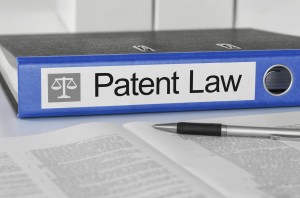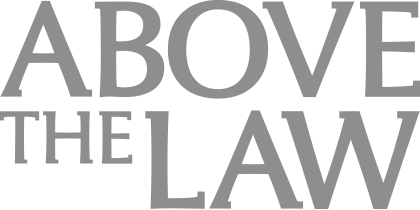Own One Design, Own Them All?
It is more important than ever for IP lawyers to keep up with changes in the law around the increasingly valuable assets that are design patents.
 In the early stages of my career, design patents were occasional curiosities. Yes, once in a while I would encounter a design patent, perhaps as an add-on in a larger case where multiple utility patents were being asserted. Or as a component of an omnibus “stop knocking us off” case where an IP owner decided to attack an infringer using every bit of IP in their arsenal. As a junior patent litigator at a Biglaw firm, years went by between matters I handled involving design patents. Lately, however, design patents have become more in vogue — as well as a bigger piece of my practice. These shifts in the perception and client uptake of design patents illustrate how it is more important than ever for IP lawyers to keep up with changes in the law around these increasingly valuable assets.
In the early stages of my career, design patents were occasional curiosities. Yes, once in a while I would encounter a design patent, perhaps as an add-on in a larger case where multiple utility patents were being asserted. Or as a component of an omnibus “stop knocking us off” case where an IP owner decided to attack an infringer using every bit of IP in their arsenal. As a junior patent litigator at a Biglaw firm, years went by between matters I handled involving design patents. Lately, however, design patents have become more in vogue — as well as a bigger piece of my practice. These shifts in the perception and client uptake of design patents illustrate how it is more important than ever for IP lawyers to keep up with changes in the law around these increasingly valuable assets.
In some ways, the high water mark for design patents in terms of recent public perception came during the famous war between Apple and Samsung over smartphone patents. Those proceedings included multiple skirmishes over design patents, including whether Samsung’s phones infringed the iPhone design and what damages were due to Apple once a jury confirmed that they did. So critical were the issues presented by the design patents that they were among those that made their way up the judicial ladder during the numerous appeals from the trial court proceedings.
During Apple/Samsung, everyone was reminded that design patents play an important role on at least two fronts. First, that the damages scheme for design patents differs from that of utility patents — and can occasionally make them more valuable to an IP owner once infringement is found. Second, the importance of design to ubiquitous consumer products like cell phones makes protecting those designs an imperative for innovative companies. Moreover, becoming known for innovative design — a key driver of Apple’s success — is credited with bringing commercial success for companies. Accordingly, Apple/Samsung reminded everyone that design patents should not be dismissed as the forgotten stepchild of the IP world.
Post-Apple/Samsung, there was a period of a return to normalcy in terms of design patents. Over the past few years, however, there has been a resurgence of interest in design patents, fueled by a number of factors. One has been the rise of Amazon and other third-party marketplaces. Companies from all over, amongst them many from China, now have access to the American consumer in an unprecedented way. A consumer is shopping for products based on how they look when listed on a website — making design ever more critical in differentiating similar products from each other. It is unsurprising, therefore, that more companies than ever in the consumer products space are filing for design patents to protect their product designs. Both to deter copycats and also to have some means of trying to shut down infringers online. Because that is where the infringement is happening and the leading e-commerce marketplaces like Amazon are more likely to take down infringing listings based on a design, rather than a utility, patent complaint. Most probably because determining infringement is much easier.
Other factors driving the increased interest in design patents include the changes wrought in the patent system by the America Invents Act, especially with respect to the increased uncertainty around the value of utility patents because of the ease of invalidating them through IPRs. When utility patents are considered more vulnerable, design patents look more attractive in comparison. For one, they are cheaper and quicker to get issued. Also, they serve the purpose of allowing IP owners to take enforcement action when such action is necessary. Add in their increased value in certain industries because of the rise of e-commerce marketplaces and third-party sellers and there is no reason why we shouldn’t continue to see companies turning to design patent filings as a key component of their IP strategy. In fact, our firm has clients that have turned to design patent filings exclusively, including a number of foreign manufacturers of products for whom filing utility patents no longer makes sense.
With increased numbers of design patents in process, it stands to reason that we will continue to see more design patent enforcement going forward. Much of that enforcement may take place online for the reasons discussed above. But there will also be district court cases, including some that will go up on appeal and thus help shape the law for future cases. As of this writing, there is at least one design patent case of interest that is pending decision in the Federal Circuit. In that case, the patentee is a company called Curver Luxembourg (represented by my former mentors) which is asserting a design patent against a basket made by a housewares company called Home Expressions (where my brother worked for a good while).
The issue on appeal appears simple, but actually presents interesting questions about design patent scope. In the trial court, Home Expressions successfully had the case dismissed based on the fact that the design patent’s title indicated that it was a design for a chair, not a basket. Even though the accused basket had an identical design, the trial judge ruled that the scope of the patent was limited to a chair because of the title. If affirmed by the Federal Circuit, design patent owners will need to show much more care when crafting the titles of their patents, as part of being more realistic about what their patents actually protect. If reversed, a whole new enforcement vista for design patent owners could open up, whereby design patents on one type of product could be asserted against dissimilar products that incorporate the patented ornamental designs. Either way, the decision will be an important one for design patent owners and their counsel to digest.
Sponsored


Happy Lawyers, Better Results The Key To Thriving In Tough Times

Law Firm Business Development Is More Than Relationship Building

Curbing Client And Talent Loss With Productivity Tech
Ultimately, design patents will likely continue to grow in importance for IP owners. As such, this is as good a time as any for IP lawyers to stay abreast of changes in the law around design patents, as well as to seek out any and all opportunities to handle design patent matters. Younger IP lawyers interested in design issues should be especially keen to garner that experience, as the field of design patent practitioners is less saturated than those for the other areas of IP law. We have already seen that current design patent owners are interested in expanding the reach of their rights. Whether the Federal Circuit embraces that maximalist position is as yet unclear. But no one doubts the value of owning a design, even if owning just one design does not entitle you to own them all. Just look at your phone for proof.
Please feel free to send comments or questions to me at [email protected] or via Twitter: @gkroub. Any topic suggestions or thoughts are most welcome.
Gaston Kroub lives in Brooklyn and is a founding partner of Kroub, Silbersher & Kolmykov PLLC, an intellectual property litigation boutique, and Markman Advisors LLC, a leading consultancy on patent issues for the investment community. Gaston’s practice focuses on intellectual property litigation and related counseling, with a strong focus on patent matters. You can reach him at [email protected] or follow him on Twitter: @gkroub.
Sponsored

Curbing Client And Talent Loss With Productivity Tech








